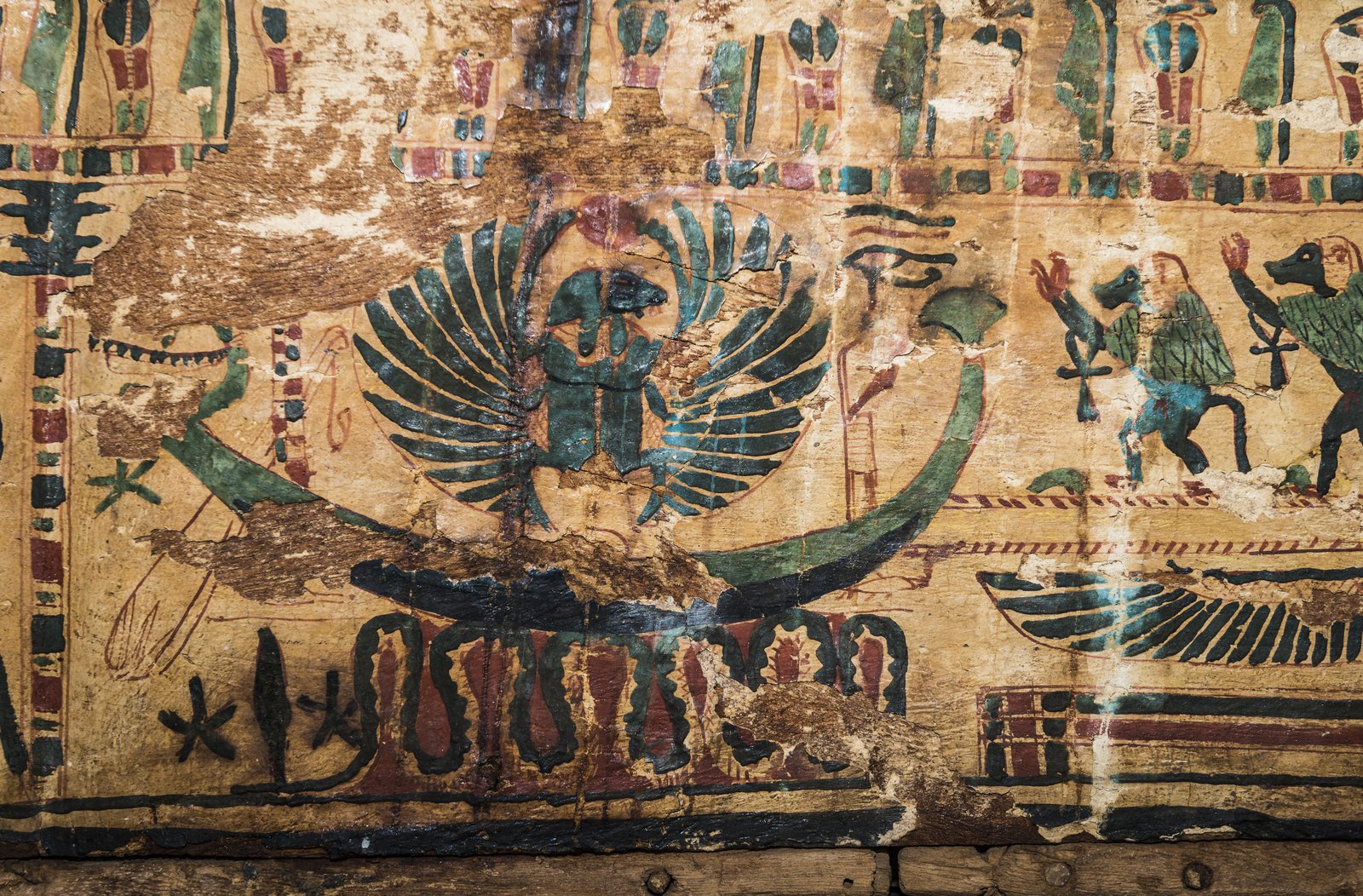The Painter in ancient Egypt
On this page...
Ancient Egyptian wall paintings provide a fascinating glimpse into the past. In tombs it was the painter's task to preserve the dead individual's spirit. Most tomb art generally followed consistent rules and held special meaning to the ancient Egyptians.
The front and profile viewpoints depicted in a single human figure are one of the most characteristic features of Egyptian art. This is reminiscent of the fact that the ancient Egyptians saw the world in terms of dualities: life and death, flood and drought, good and bad. These composite images of the most recognisable parts of the human body were more detailed than a realistic pose and assisted the tomb owner’s ka (spirit) to recognise its body.

© Australian Museum
Size matters
Perspective and the status of figures were shown in a system of strips that looks much like a series of comics or a graphic novel. The use of perspective with a vanishing point was not used in Egyptian art. The lower border of a register was the ground line and depth was shown by the overlapping of figures or by figures stacked one above the other. The size of a figure indicated its relative importance in the image. Kings were portrayed larger than life to symbolise their god-like powers. Tomb owners, as the most important subject of the design, were also depicted on a grand scale. In contrast, wives and children, servants and animals were drawn smaller, indicating their lesser importance.
Grid system
Creating exact replicas of figures was critical. One way of ensuring correct proportion was to use a grid system – a set of vertical and horizontal lines painted onto the bare wall. This system allowed the initial draughtsman to faithfully copy and enlarge a design also overlaid with a grid. Cords soaked in red ink were stretched out between two pieces of wood and then snapped against the wall to create perfectly straight lines. These lines are sometimes still visible on unfinished walls.
A divine palette
The ancient Egyptians used colour not only for its aesthetic appeal but also for its perceived meaning. Both warm and cool colours were used, offering depth and interest to their art as well as signs to their gods. The Egyptians believed that certain colours were not merely symbolic of but were imbued with specific powers or attributes that were linked to various gods. As a result, great power could be contained within an object if it was made or painted in meaningful colours.
The pigments used to make various colours consisted mainly of minerals that occur naturally in Egypt and surrounding areas. Minerals were ground up in a stone mortar and mixed in pots with water and an adhesive such as wood gum or egg white. Paint made in this way was called ‘tempera’.
Colours – their source and meaning
- White was made from calcium carbonate (lime) or calcium sulphate (gypsum) and equalled purity. Calcite (also called Egyptian alabaster) was also used.
- Yellow was made from ochre while a bright, golden yellow was made from orpiment. Pale yellow was made from jarosite. Yellow was used to depict female flesh while golden yellow and gold itself was used to represent the sun and flesh of gods, particularly Re the sun god. Gold was considered a divine metal because it never tarnished.
- Silver was very rare in Egypt - it could be even more precious than gold. It was thought to be what the gods' bones were made from.
- Blue was made with azurite (copper carbonate) and represented the heavens, vegetation, youth, water and the Nile River. The colour known as Egyptian blue was made from heating quartz, ground malachite and calcium carbonate together. The finer the grain, the paler the blue.
- Green was created with copper or by grinding up malachite and stood for Osiris, eternal life, prosperity and resurrection. It also represented regeneration and fertility so this colour was sacred to the goddess Hathor and was used to depict the flesh of Nephthys – the goddess of rebirth.
- Red was made with ochre, just like yellow. Ochre gives a range of colours from yellow to red to dark brown, depending on the amount of water used. Iron oxide was also often used. During the New Kingdom, realgar was used for red but it fades to yellow over time. Red was used to paint male skin tones. It also represented the sun, evil, power, blood and life force.
- Black was made from soot or charcoal and signified Egypt’s ancient name ‘Kemet’ or ‘black land’ and the silt-fed soil around the Nile. Black was also used to denote the underworld and Osiris.

